Tradescantia – one of the most unpretentious and intriguing indoor plants. Due to its ability to grow rapidly and form intricate tangles of stems, the plant has earned the nickname “Gossiping Women.”
Its striking appearance and the proven ability of Tradescantia to absorb electromagnetic radiation have made it highly sought after among interior designers and home gardeners.
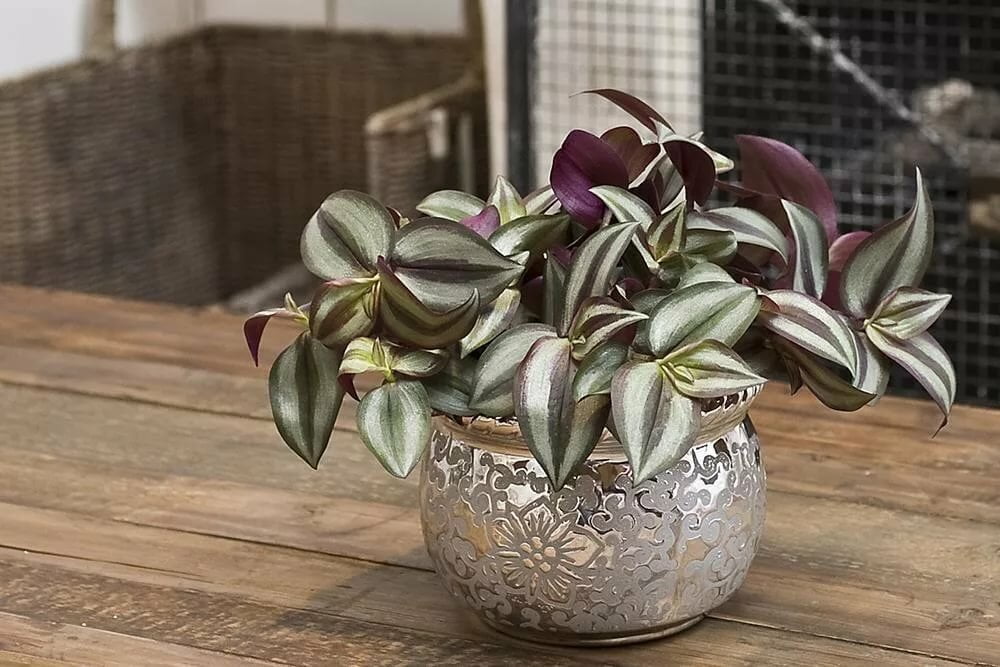
Plant Description
Tradescantia (Tradescantia) belongs to the Commelinaceae family and is a herbaceous, evergreen, perennial succulent.
The genus received its name thanks to the English explorers, the Tradescant family, who spent their lives traveling to new lands, collecting and studying vegetation (16-17th century). The genus name was given by Carl Linnaeus as recognition of the Tradescant family’s contribution to the development of botanical science.

The natural habitat of Tradescantia is the temperate regions of South and North America. Nowadays, you can find this flower all over the world.
In nature, 75 species of this plant have been discovered.
Tradescantia is a small plant with creeping stems. The leaves predominantly have an elongated elliptical shape. The plant blooms, and the color of the leaves and flowers varies widely depending on the species.
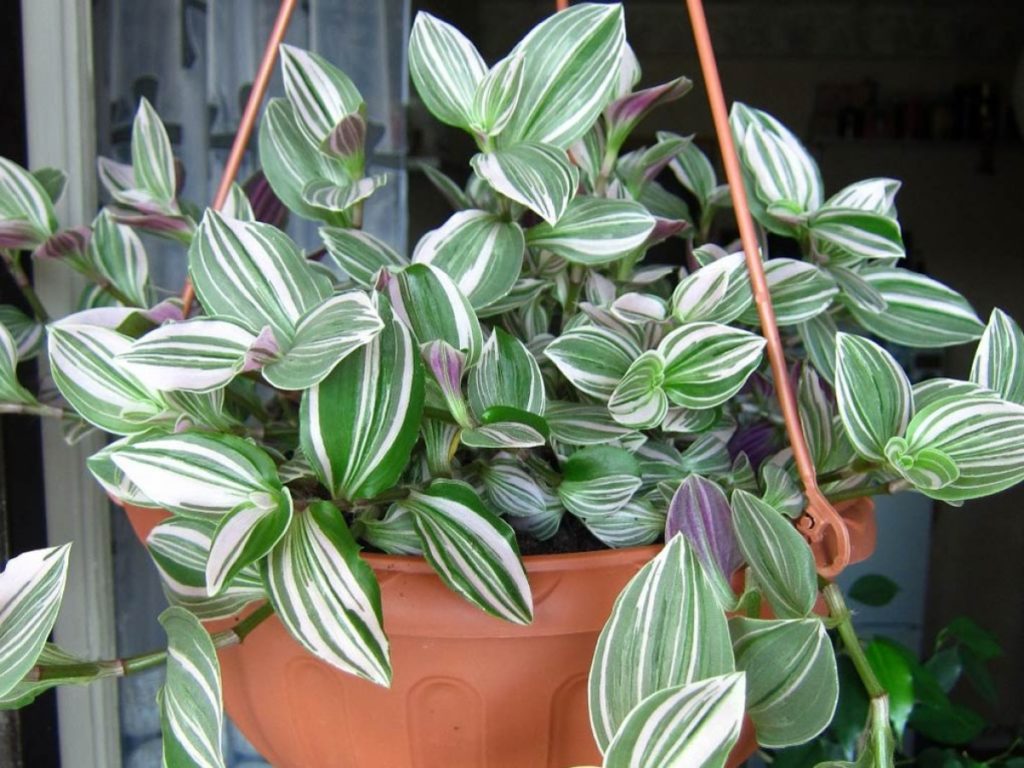
In the culture of South American residents, Tradescantia has long been used in medicine. However, research has not confirmed any medicinal properties of the plant, except for its ability to purify the air.
In the modern world, Tradescantia is a popular decorative plant, often grown in a hanging form, and is perfect for greening various landscaping objects and indoor spaces.
Species, Varieties, Names with Photos
Anderson’s Tradescantia / Tradescantia x Andersoniana
A cultivated variety developed by Dutch breeder Anderson. The stems can grow up to eighty centimeters long. The flower color can be pink, blue, or purple. This plant is suitable for both indoor and outdoor cultivation.
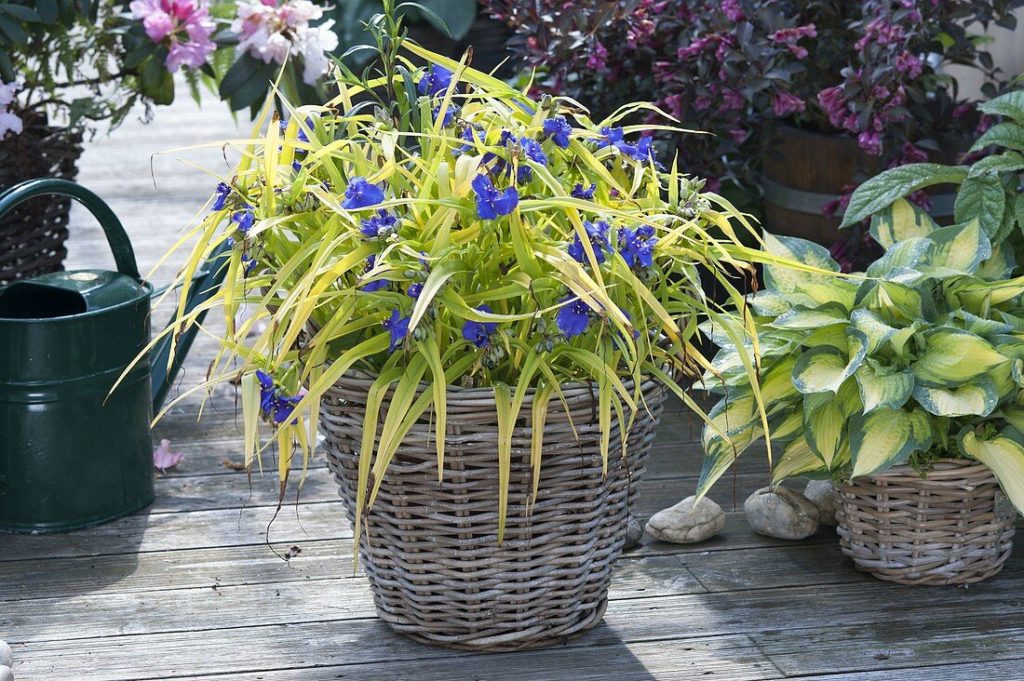
White-Flowered Tradescantia / Tradescantia Albiflora
A natural species from South America valued for its decorative leaves. The leaves are small ovals, up to 6 cm in length and 2 cm in width, with a pale green color and white stripes. The leaves have a glossy texture. The flowers are small white stars, and each flower’s lifespan does not exceed a day.
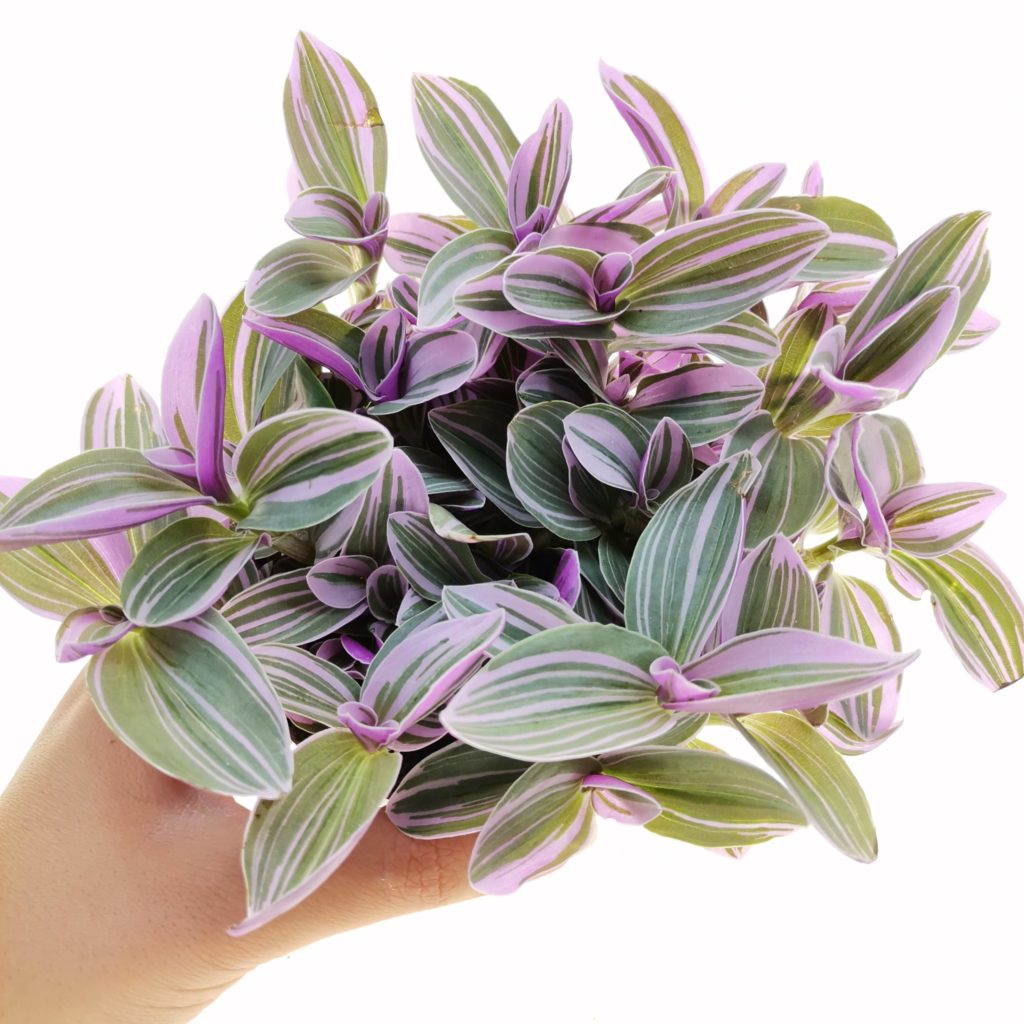
Numerous varieties with various leaf shades have been developed based on this species:
- tricolor
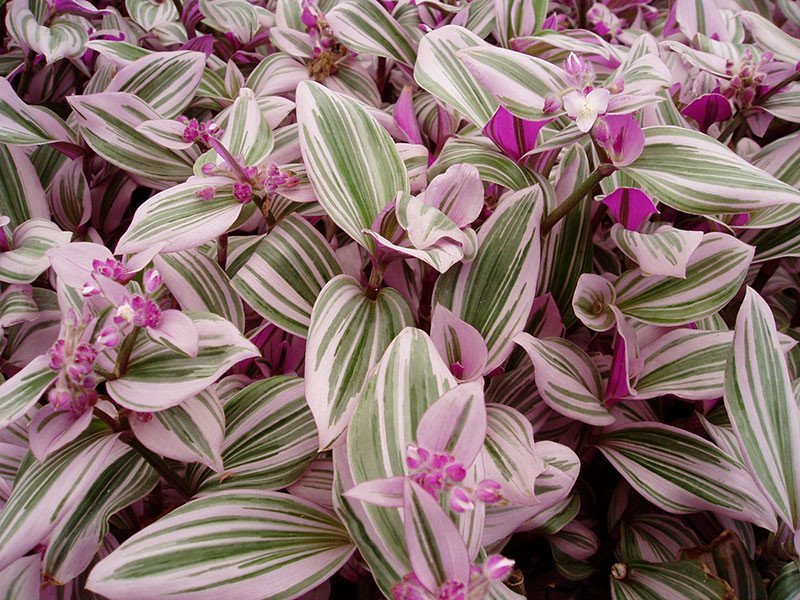
- albovittata
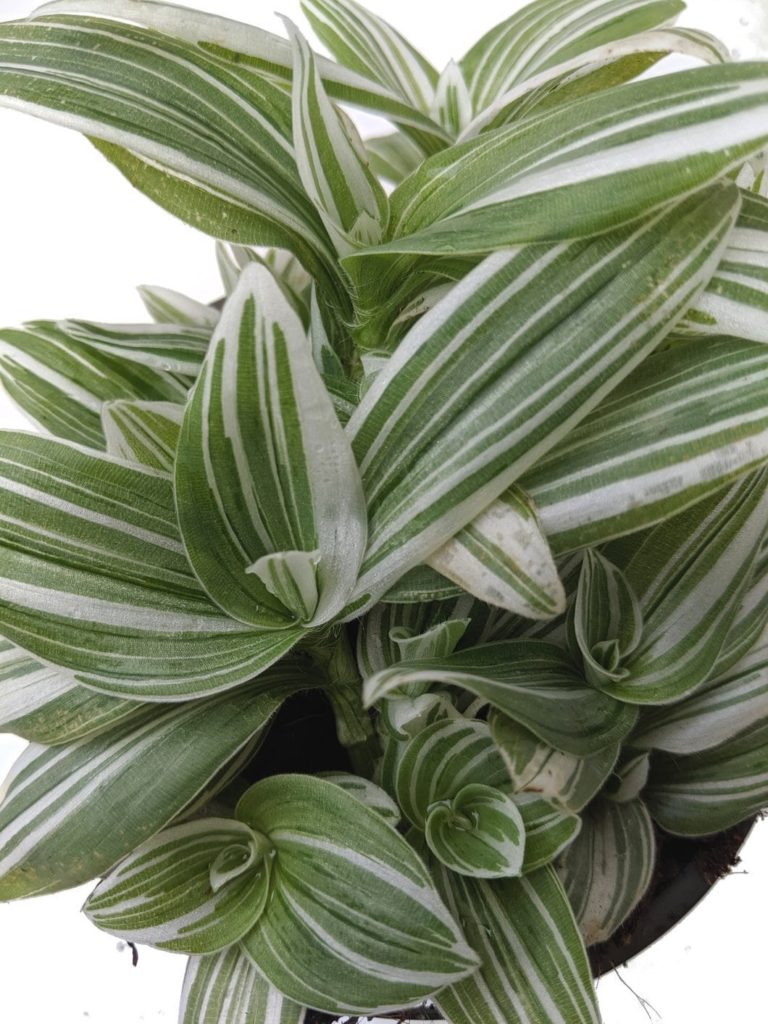
Virginia Tradescantia / Tradescantia Virginiana
This species is native to the United States, particularly in Virginia. The stems can grow up to 50-60 centimeters, and the oval leaves can reach up to 20 centimeters in length. It has a long and abundant flowering period with clustered buds. The color of the flowers ranges from light blue to dark blue.
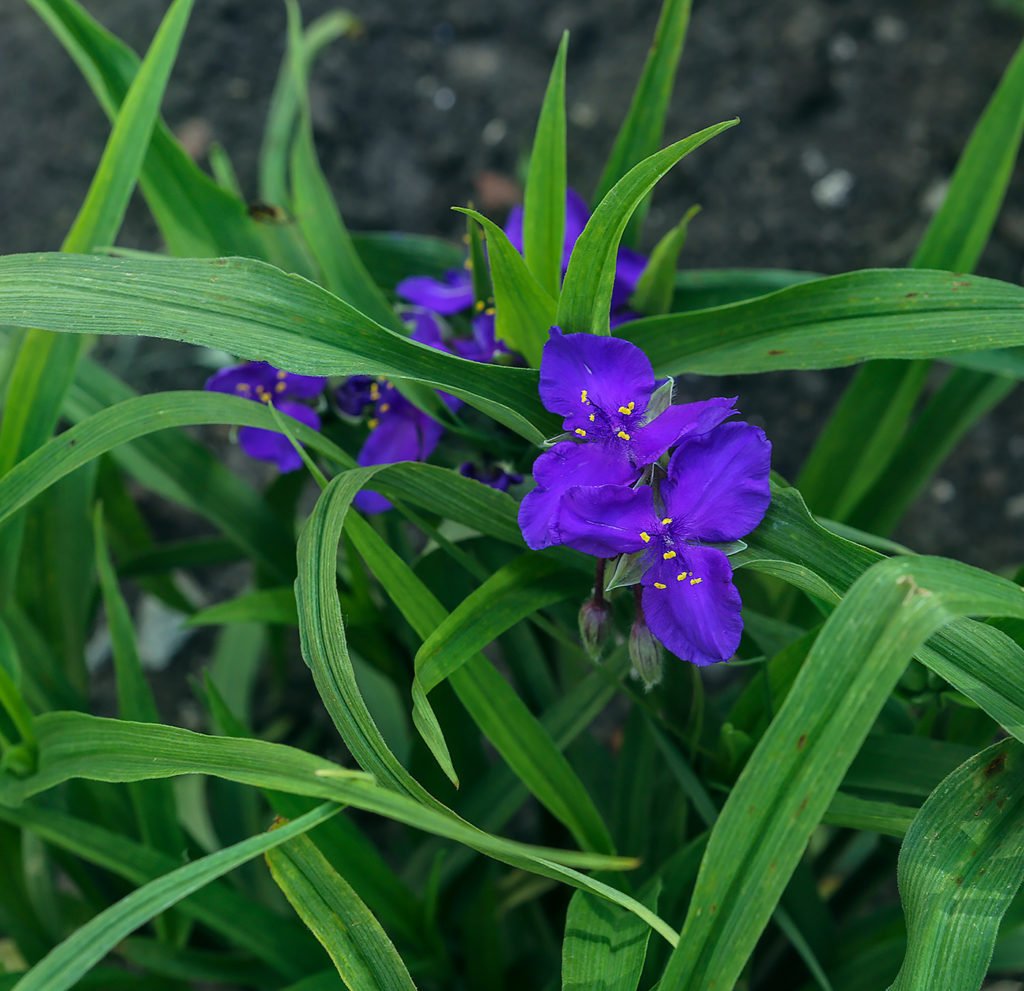
The most beautiful varieties of this species include:
- caerulea
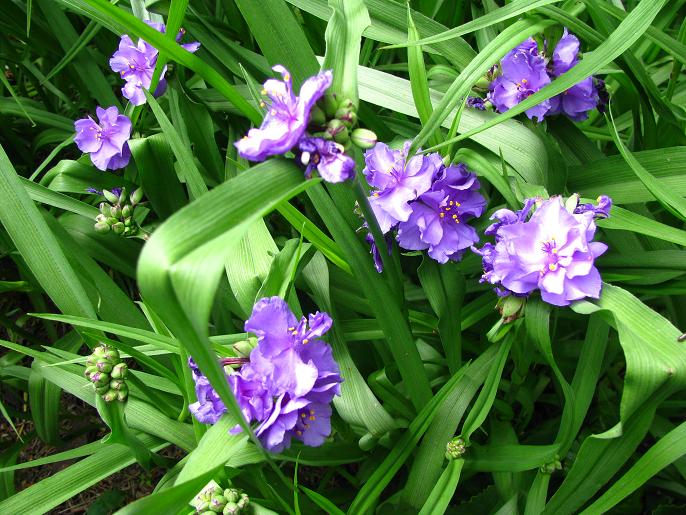
- rubra

Boat Lily or Moses-in-the-Cradle / Tradescantia Spathacea or Rhoeo Discolor
Upright leaves form a lush rosette. The leaves have a glossy texture with two-sided coloring. The outer part of the leaf blade is green, while the back is pale purple. The flowers are small, milky in color.
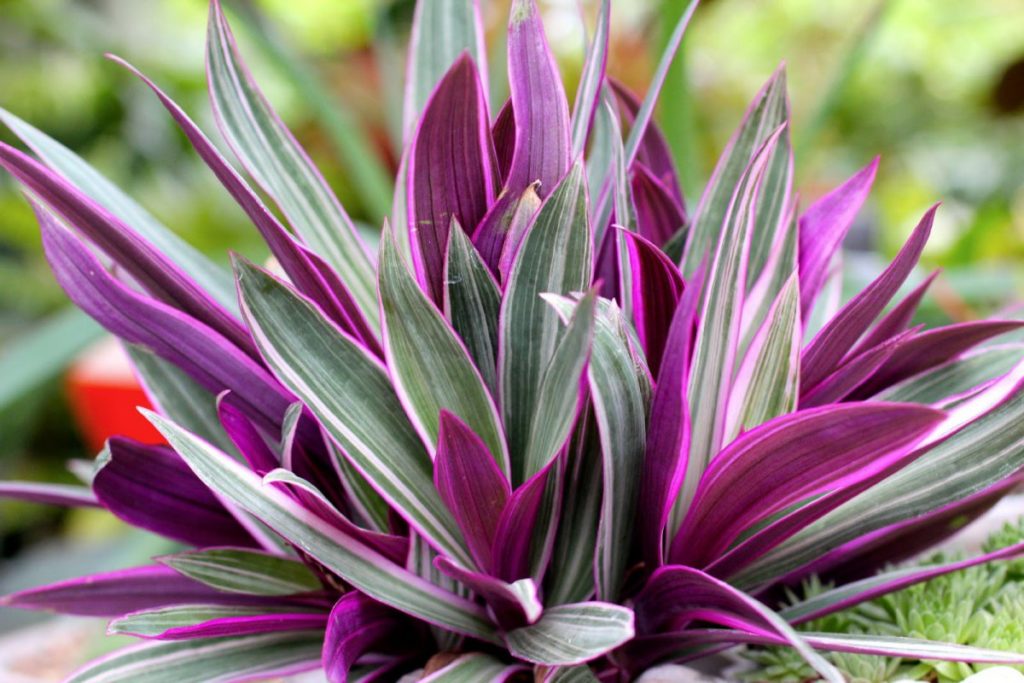
Blossfeld’s Tradescantia / Tradescantia Blossfeldiana
A very bright and striking plant from Argentina. The green stems have a reddish tint. The small leaves (8×3 cm) are oval with pointed tips. The upper part of the leaf is glossy and red, while the reverse side is purple and covered with silvery-white fuzz. It produces fuzzy flower stalks and blooms with velvety purple flowers.
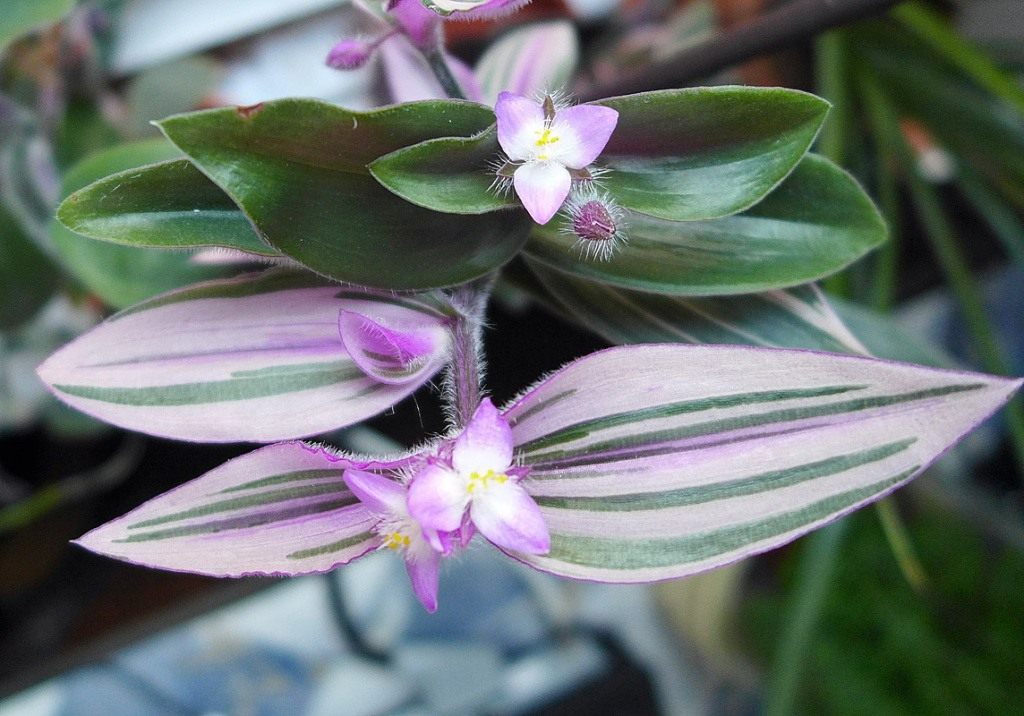
River Spiderwort / Tradescantia Fluminensis
A Brazilian species with stems of purple-burgundy color adorned with golden spots. The small, oval-shaped leaves are green.
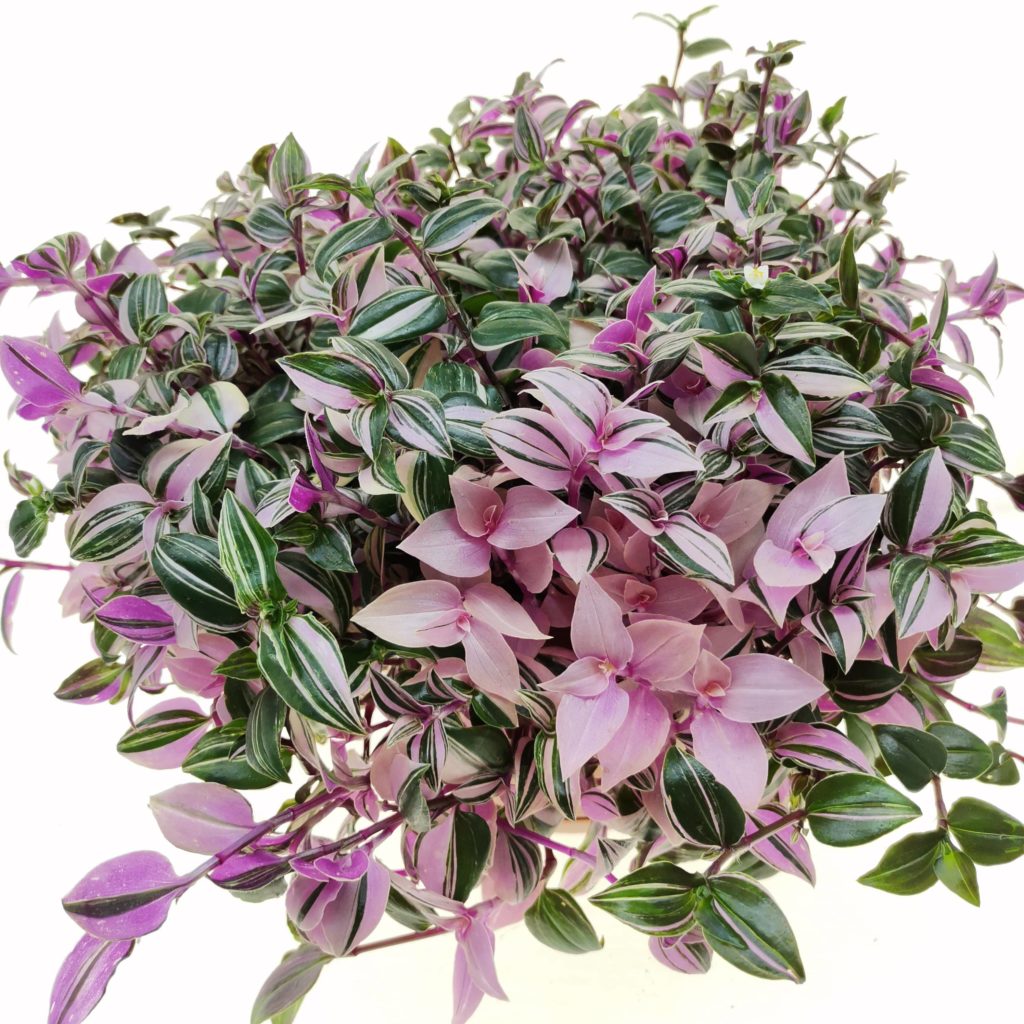
Varietal varieties include:
- Variegata
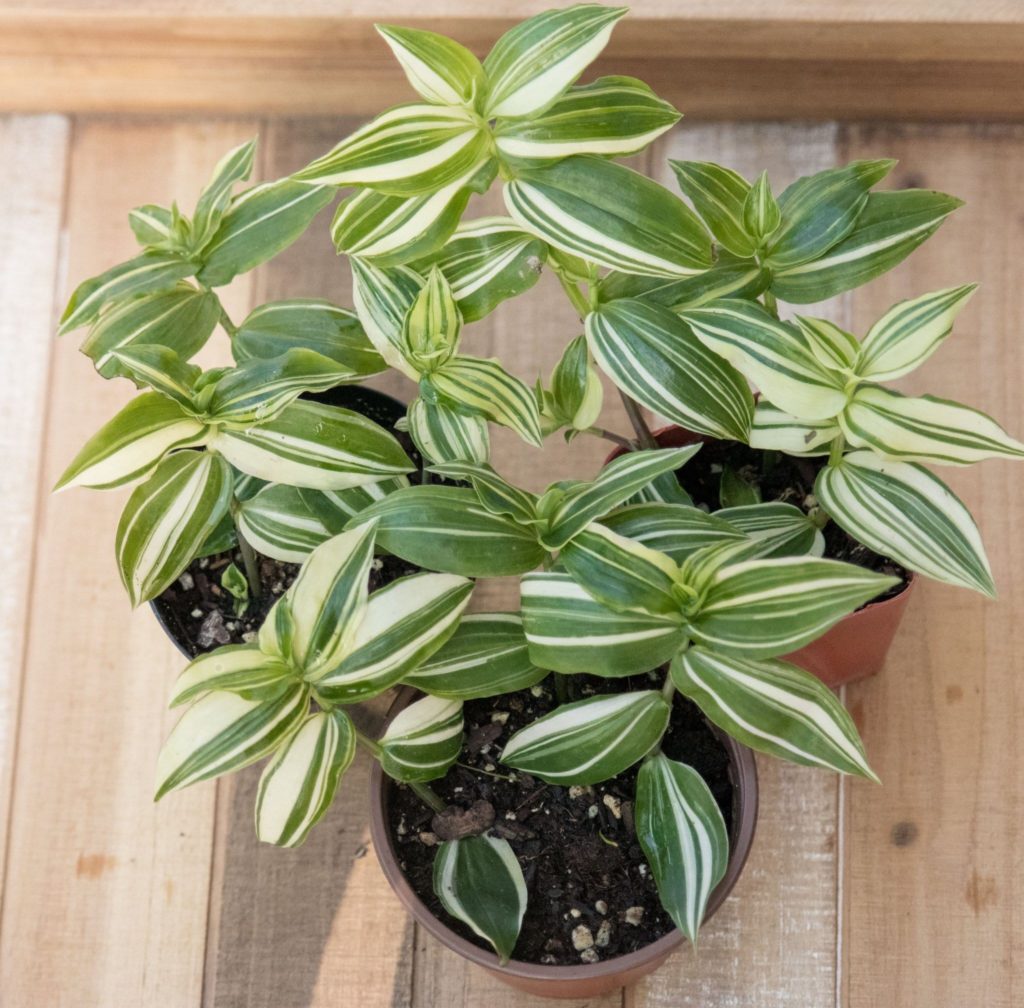
- Quicksilver
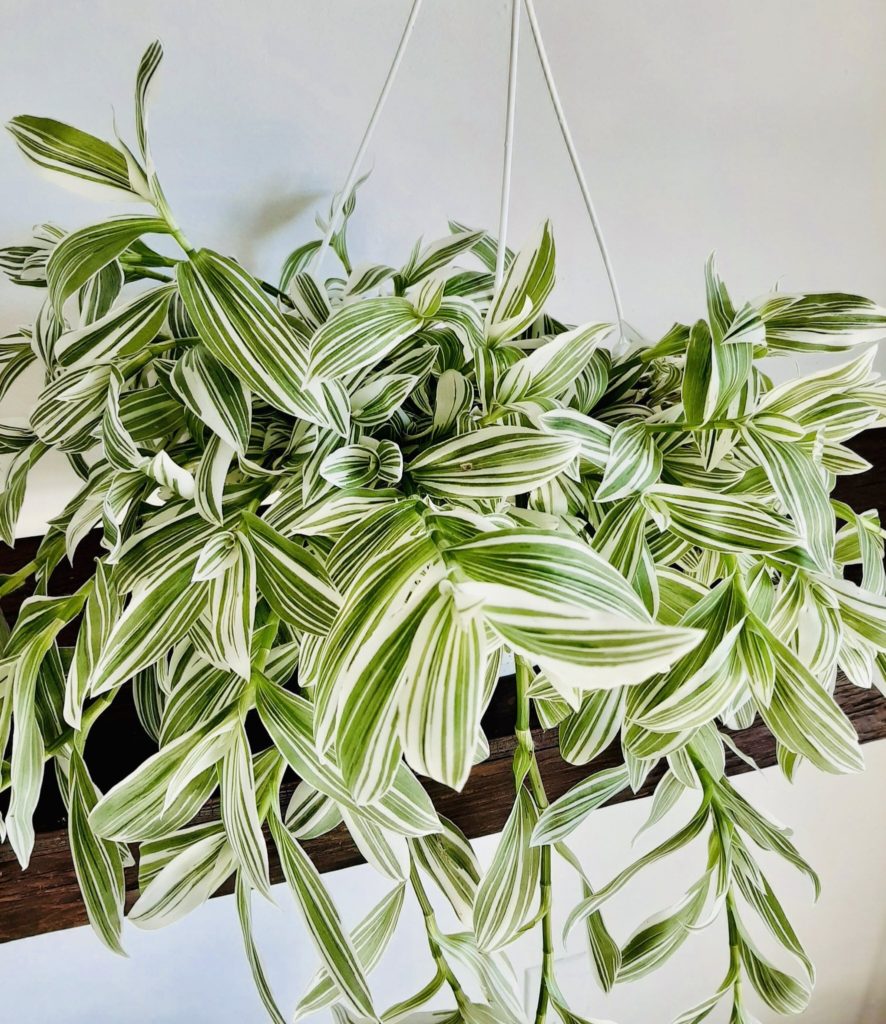
Wandering Jew or Zebrina Tradescantia / Tradescantia Zebrina
This plant is also known as Hanging Tradescantia / Tradescantia pendula.
Traditionally used as a trailing plant for vertical greening. It has long red stems. The smooth, elliptical leaves are 10×5 cm. The upper part of the leaf is green with white stripes, while the back of the leaf is reddish-lavender. The flowers come in dark purple shades.
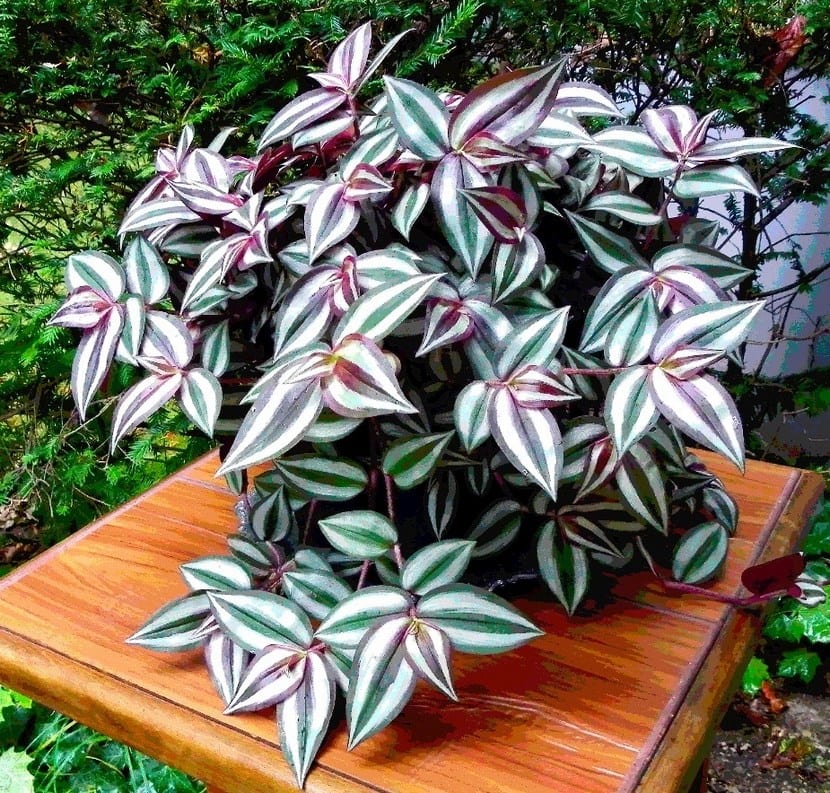
Boat-Like Tradescantia / Tradescantia Navicularis
This species is a representative of Mexican flora. The small leaves measure 4×1 centimeters and are shaped like “boat-like” ovals. The leaves are fleshy, green, with purple spots around the edges. The flowers are in shades of pink.
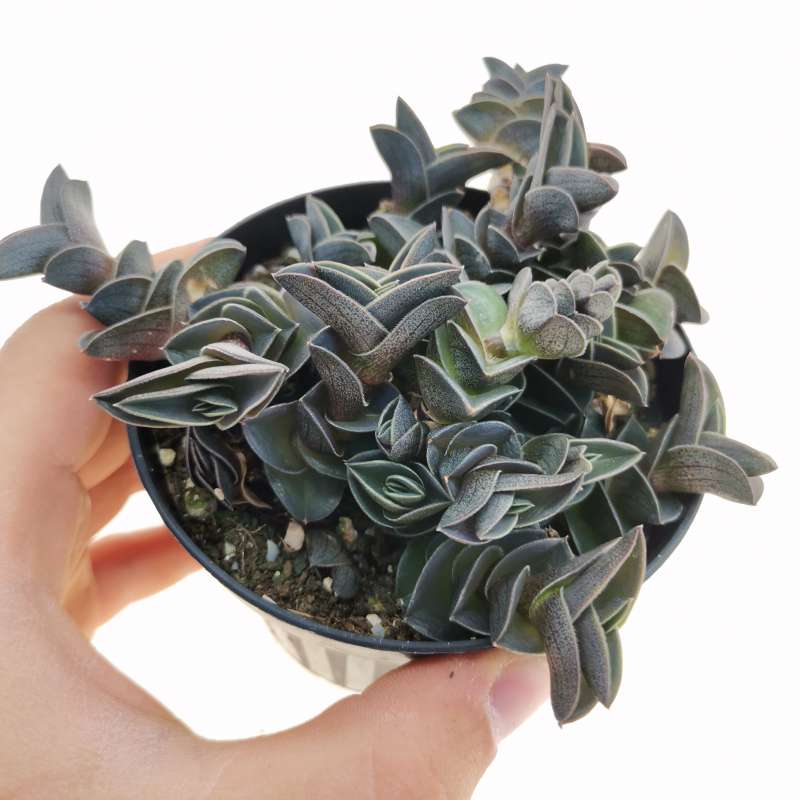
Hairy Tradescantia / Tradescantia Pilosa
On long, straight stems, elongated green leaves are arranged alternately. The leaf blades are entirely covered in silvery fuzz. The flowers have a delicate lilac color.
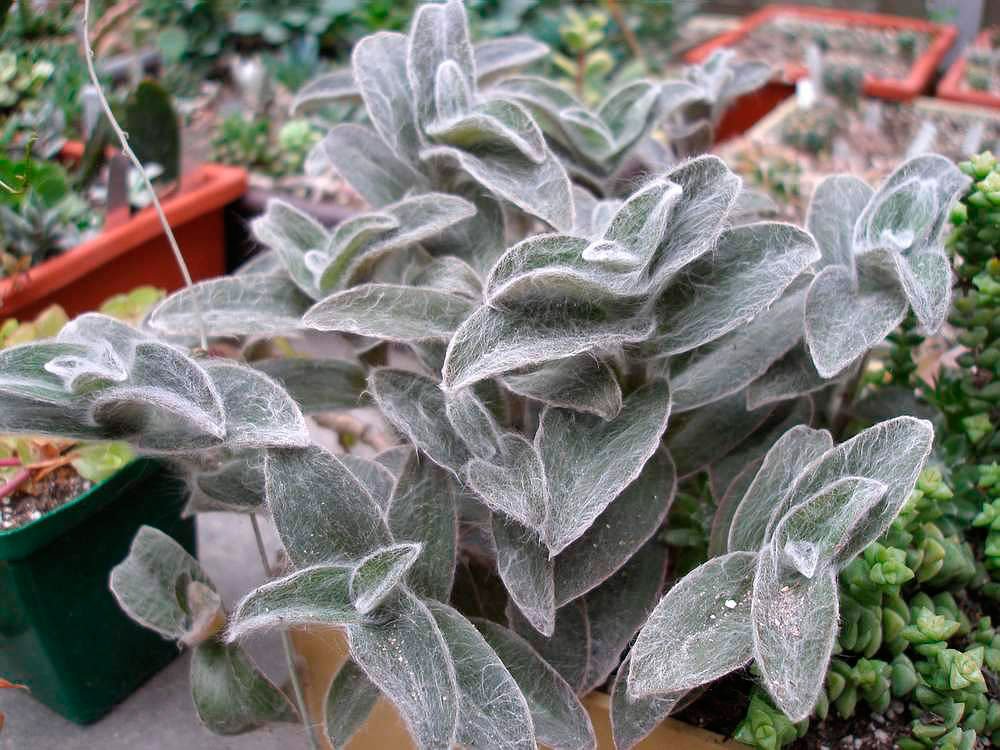
Care in Home Conditions
Light
The plant does not tolerate direct sunlight. Sunburn can lead to leaf loss and wilting. In the wild, it grows in shady areas. However, light is still important for Tradescantia. For indoor plants, choose a location where it gets enough light but is protected from harsh sunlight.
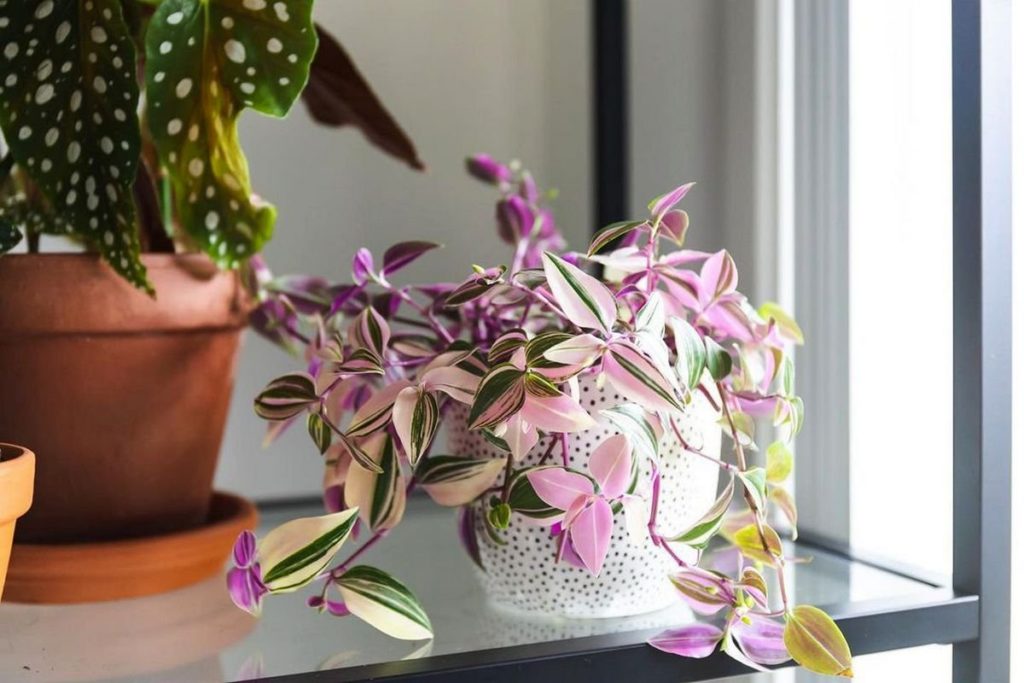
Temperature
The flower is not very demanding when it comes to temperature. It can tolerate temperatures up to 25 degrees Celsius and can go dormant at 10 degrees Celsius. Tradescantia loves fresh air, is not sensitive to drafts, and thrives on balconies and verandas.
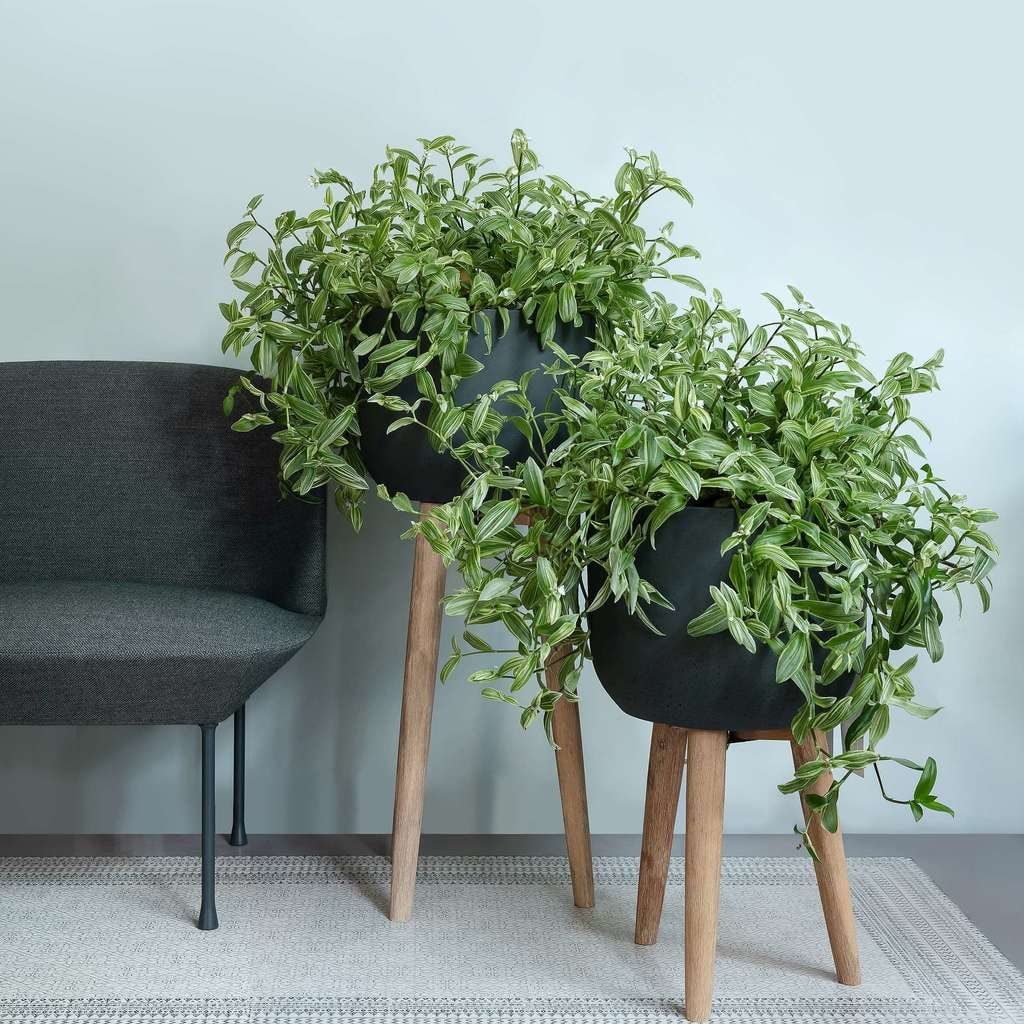
Watering and Humidity
Tradescantia requires moderate watering. The soil should not be overly wet or dried out. In low temperatures, it’s sufficient to moisten the soil once a week. During hot periods, you can increase watering to every 8 days. Be sure to drain excess water from the saucer.
The plant does not have specific humidity requirements, but it enjoys occasional misting and wiping the leaves to remove dust.
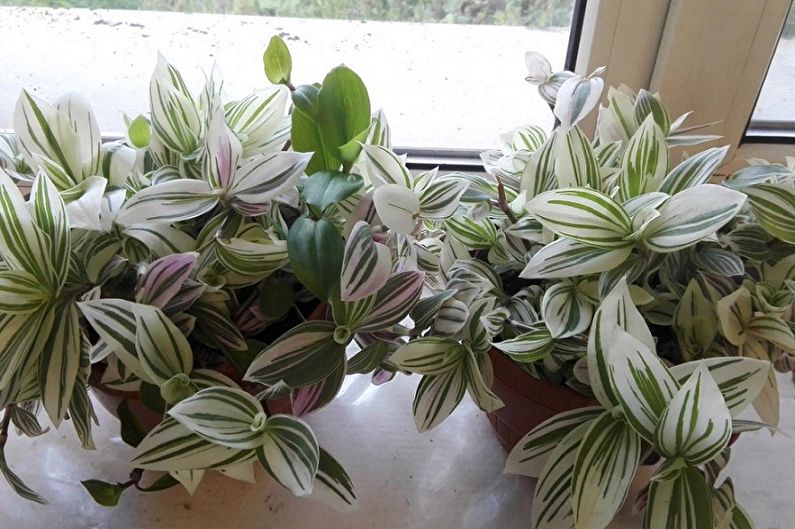
Soil
The soil mix for Tradescantia consists of humus, loam, leafy soil, and river sand (1:1:1:0.5). It’s essential to have a drainage layer of several centimeters.
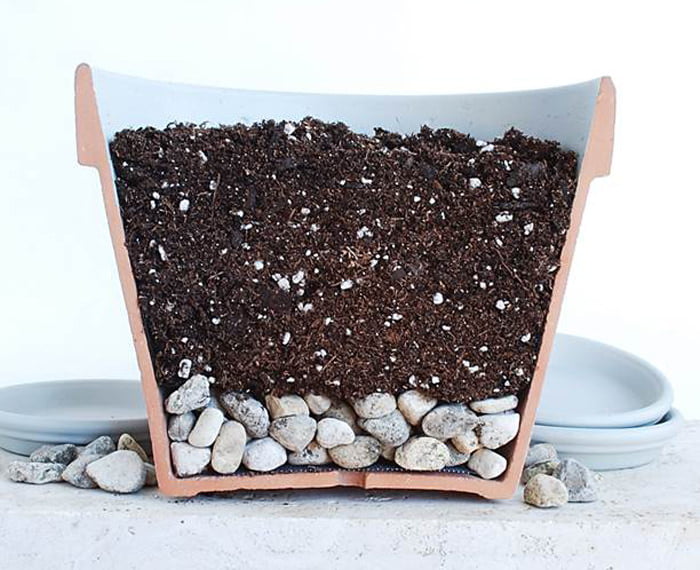
Fertilization
Fertilization is only needed in spring and summer when the plant is in its growing season. Liquid balanced fertilizers for indoor leafy plants are the optimal choice. During autumn and winter, during the resting period, fertilization is not necessary.
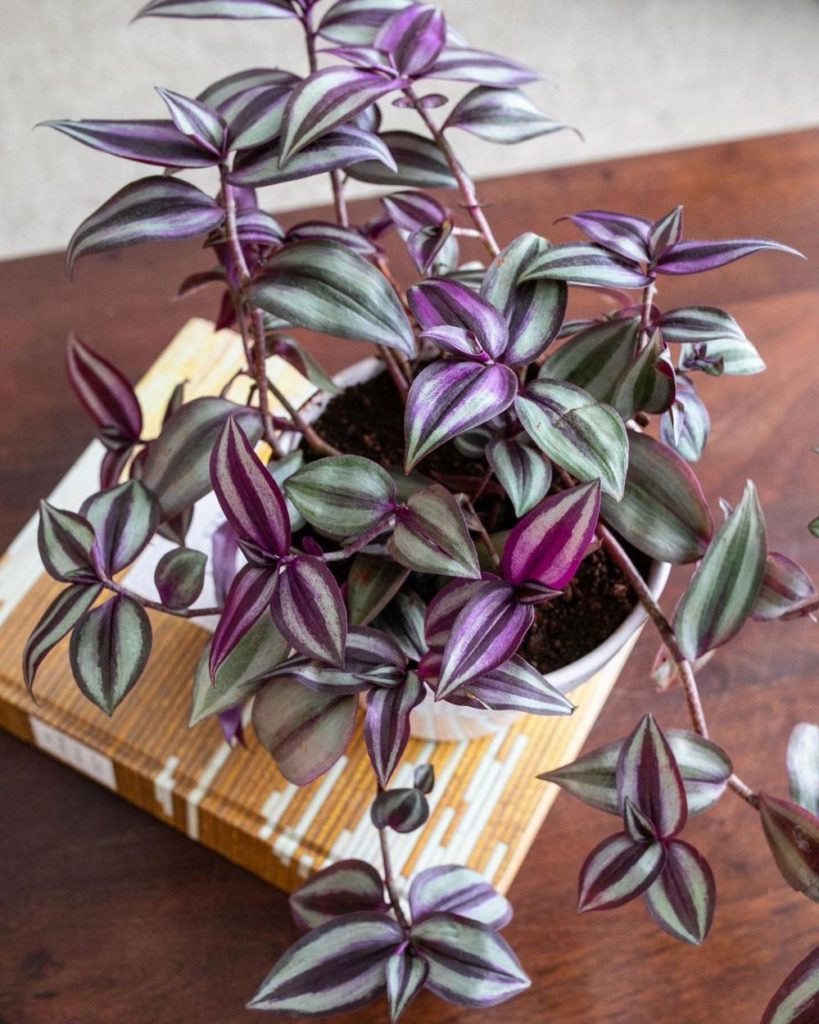
Repotting
The repotting procedure should be done no more than once every 3 years. During repotting, not only should you increase the pot size slightly, but also completely replace the soil, clean the roots from old soil, and remove any damaged parts.
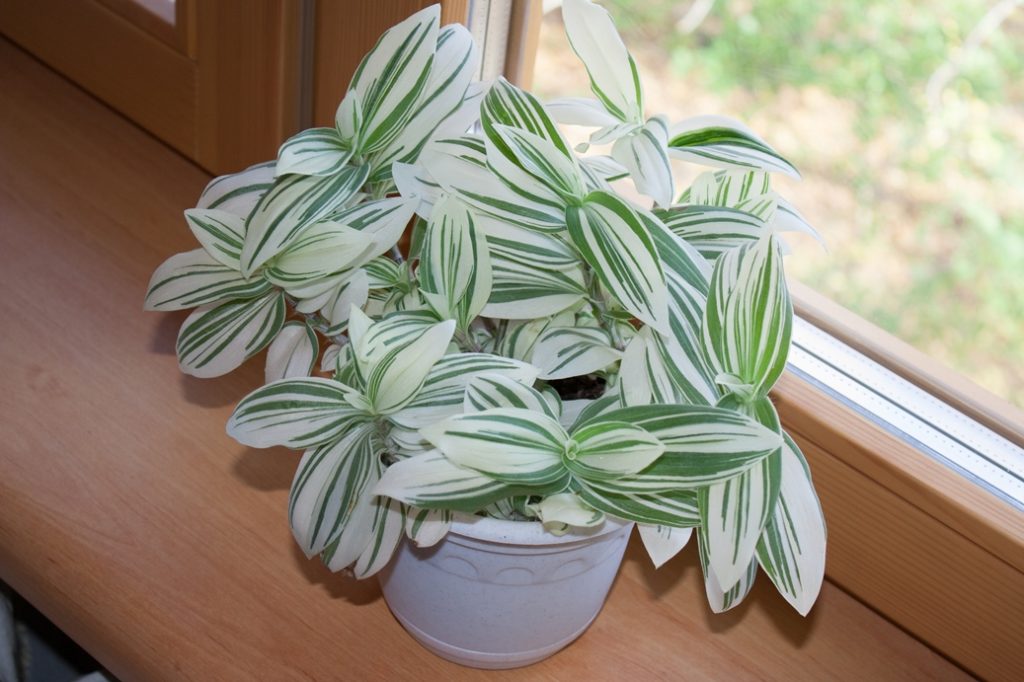
Methods of Propagating Tradescantia
From Seeds
Seeds develop after flowering in seed pods, but for artificial pollination to obtain seeds outside the natural habitat, specific procedures are required. Seeds of various species and hybrid varieties can be easily found in flower shops.
The best time to start sowing seeds is at the end of February or early March. The seeds are sown in rows in shallow furrows in containers filled with a moist sand-peat mixture (50/50). Creating a greenhouse effect with plastic or glass is essential. Ventilating the mini-greenhouse and watering the soil are necessary for successful seed germination.
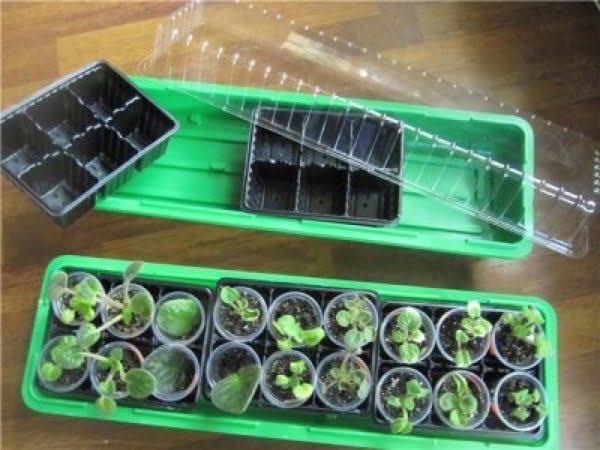
It takes 15 to 20 days for the seeds to germinate. The seedlings should grow outdoors for another couple of weeks until they have strong leaves. When the seedlings have several leaves, they can be transplanted into individual containers.
From Cuttings
Cuttings can be obtained by trimming the upper parts of the stems. Stems that are around 15 centimeters in length are suitable for planting. To propagate, you can either use water or plant the cuttings directly in a pot with substrate. When planting cuttings in soil, it’s advisable to cover the stem near the root with plastic. The rooting process takes 2-3 months.
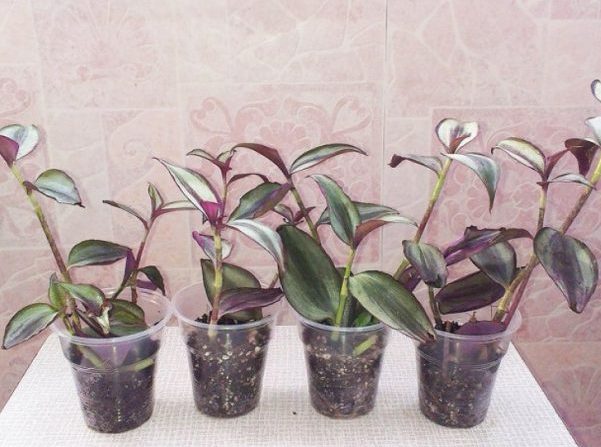
By Dividing the Plant
This method is used during repotting. The mature plant is divided with a knife along with the rhizome into several parts and immediately planted in their own pots.
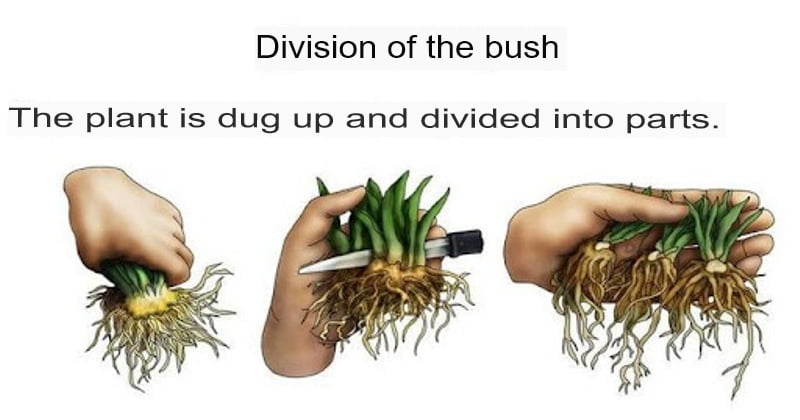
Diseases, Problems, Pests, and Treatment
With proper care, Tradescantia should not cause any trouble. If, due to care mistakes, the plant starts to lose its decorative features, drop leaves, or refuse to bloom, these issues can be easily corrected by adjusting the growing conditions to what is suitable for the plant.
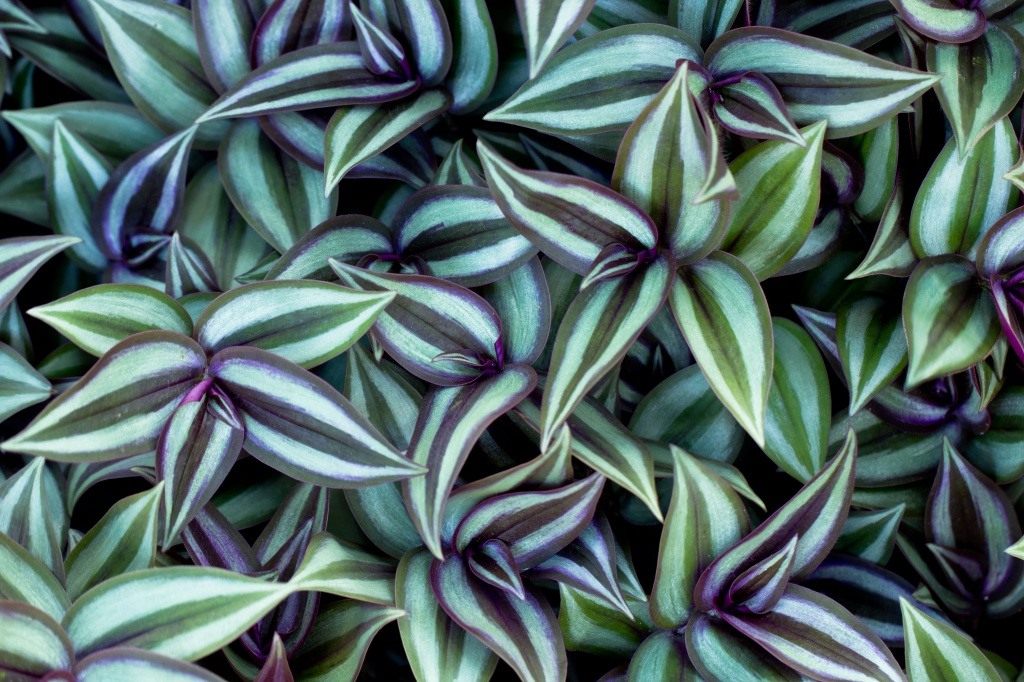
The plant is vulnerable to plant pests such as scale insects, spider mites, and aphids. These pests can lead to the development of a dangerous fungal disease called powdery mildew, which can disrupt the plant’s photosynthesis process.
Therefore, it’s important to regularly inspect your Tradescantia for signs of insects, and if you notice any infestations, apply insecticidal treatments promptly. After getting rid of the pests, it’s advisable to use fungicides as a preventive measure against powdery mildew.
Read our special article about all popular house flowers and plants Indoor Plants: Names and Photos with Descriptions.